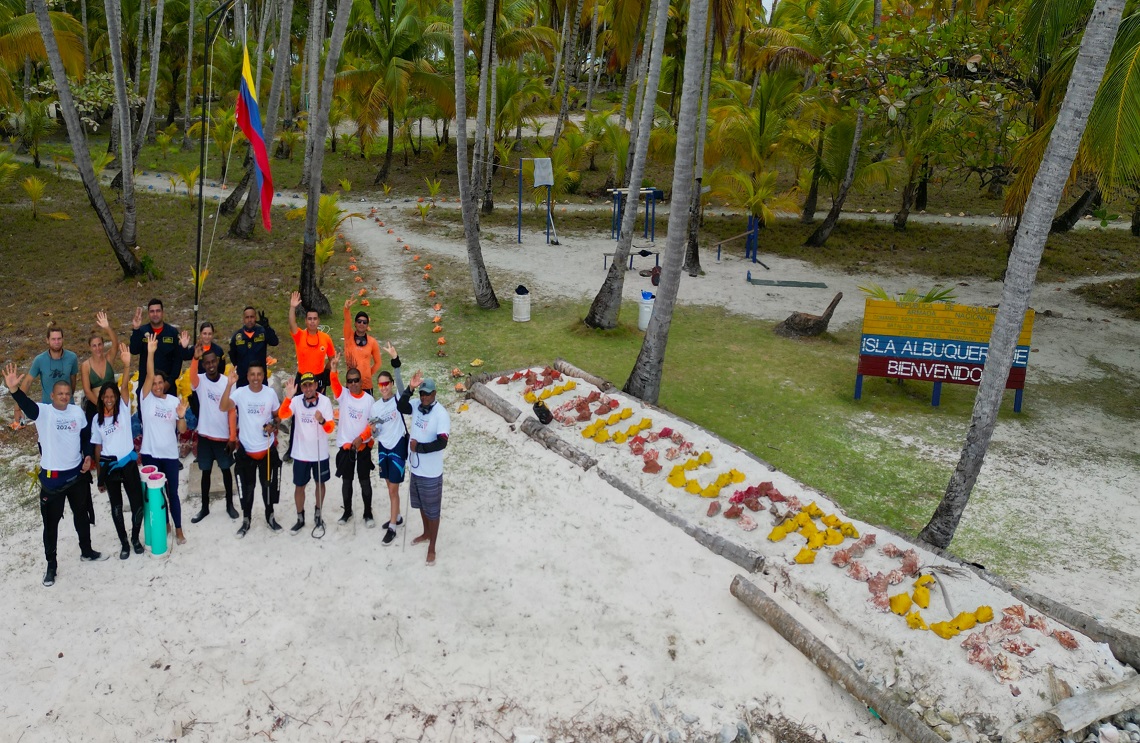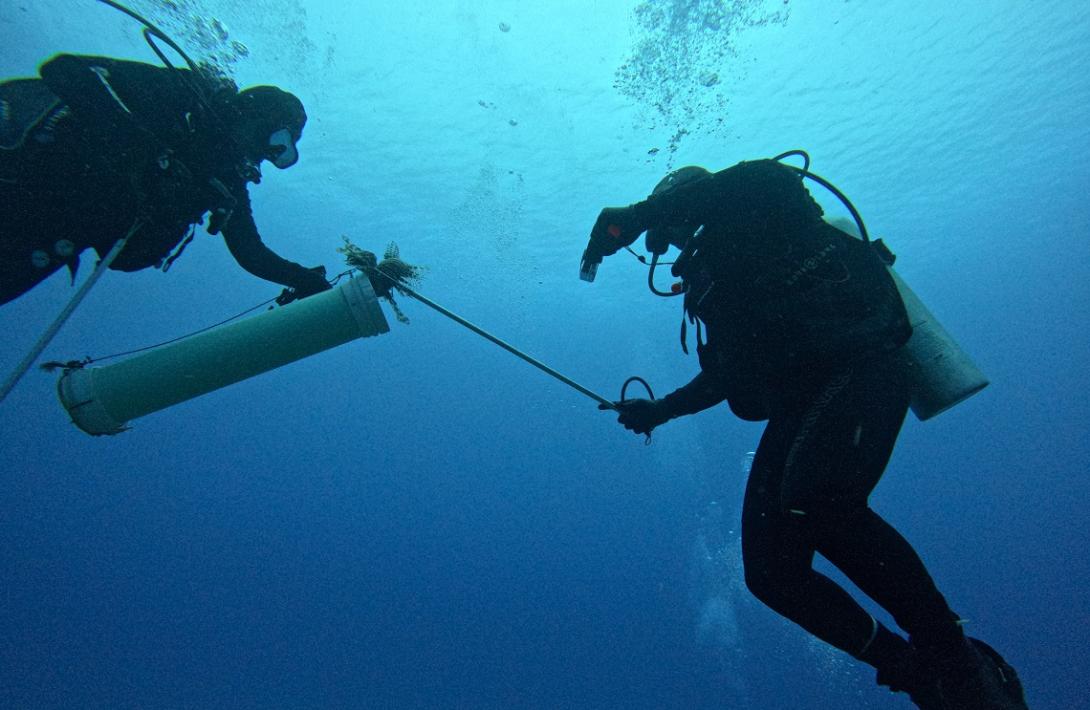The largest fish captured was 35 cm length.
In 2008 the lionfish (Pterois volitans) was observed for the first time in the insular region.
For two days, the Colombian Navy, through the Specific Command of San Andrés and Providencia, together with the LionFish Expedition Foundation, carried out lionfish hunting activity in order to neutralize this invasion by the specimen in the insular region and that hits the local ecosystems.
On this occasion, divers belonging to the San Andrés Coast Guard Station, along with volunteer divers of the LionFish Expedition Foundation, met on Albuquerque Key, an important island found 25 nautical miles southwest of San Andrés.
These activities become an opportunity to carry out monitoring and review of the specimen, through the analysis of the stomach contents that leads to an account of its impact on marine ecosystems, as well as the work of micro plastics in the area and substances that can cause hormonal shocks in the local fauna.

Colombian Navy conducted hunting activity of one of the main invaders of the region: the lionfish
It should be noted that these fish are suitable for human consumption and with them, the artisans of the island make accessories such as earrings, necklaces and bracelets; contributing to the social and economic development of the communities. In addition, by mitigating their presence, we work to ensure that snappers and groupers, widely consumed, manage to reach an adequate size, representing a benefit for the fishermen of the area.
In Cayo Albuquerque, the Specific Command of San Andrés and Providencia in the same way has a Naval post, in which, in addition to exercising sovereignty, constant work is being done to monitor the nesting of hawksbill, big-headed, leatherback and green turtles.
The Colombian Navy, in the insular region, will continue to join efforts and make its resources available to contribute to the preservation and care of Navy ecosystems and Seaflower, declared a biosphere reserve by UNESCO in 2000.
Source: Press – Navy of Colombia





